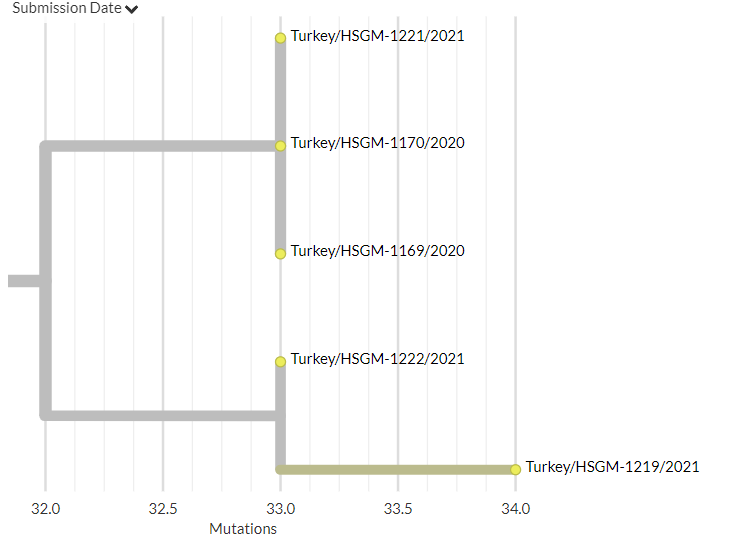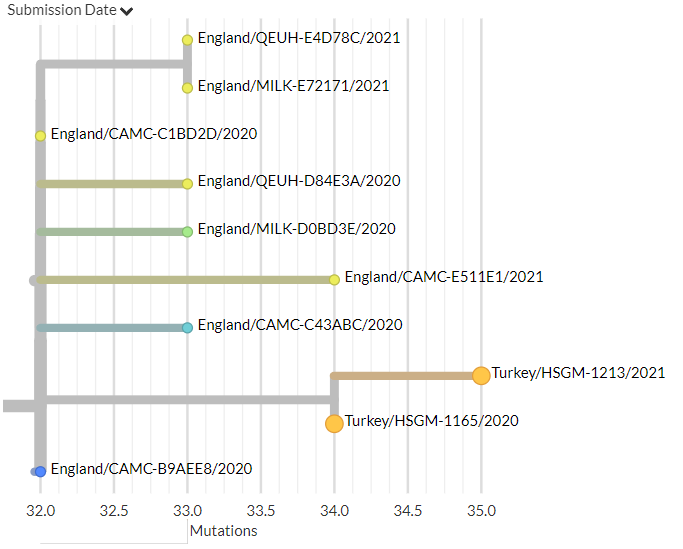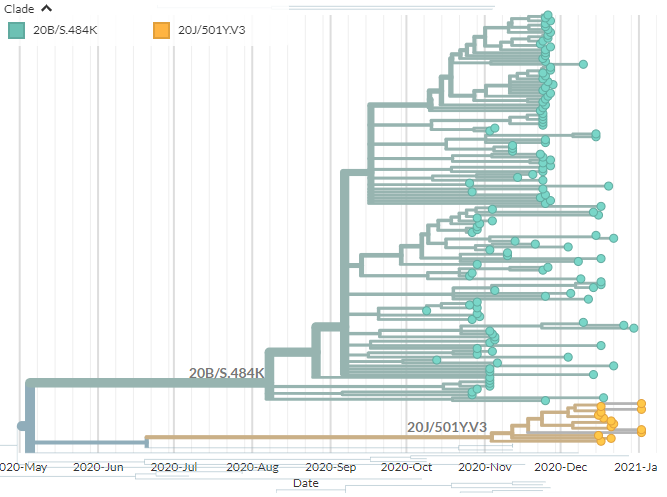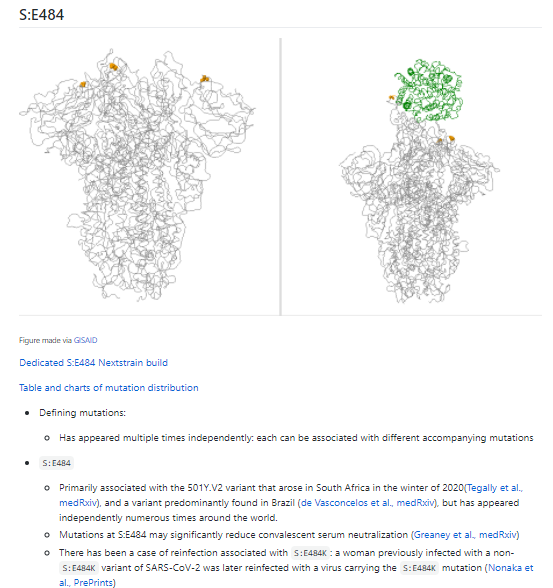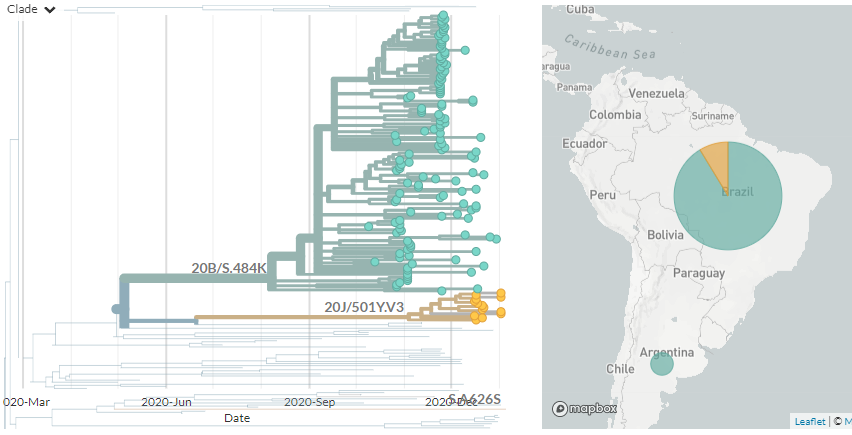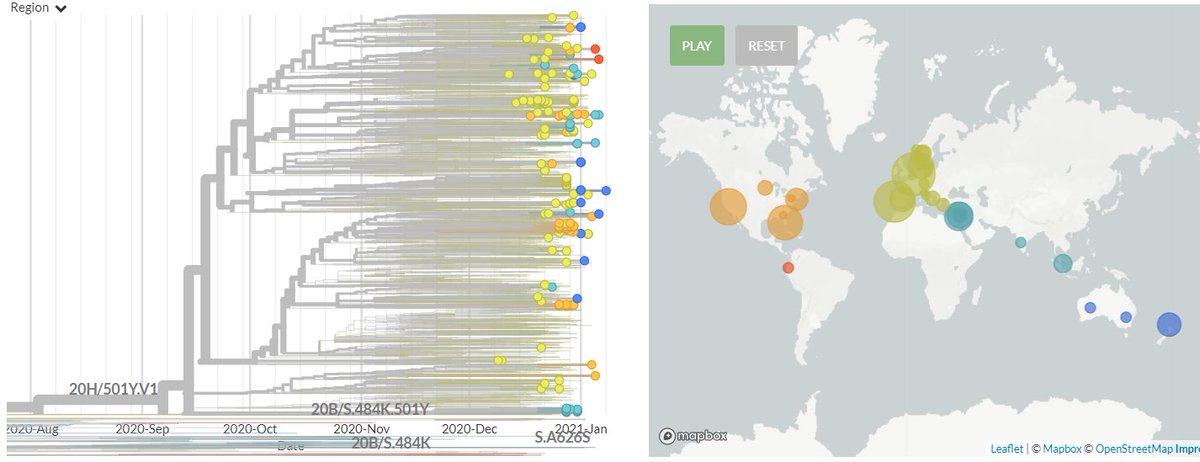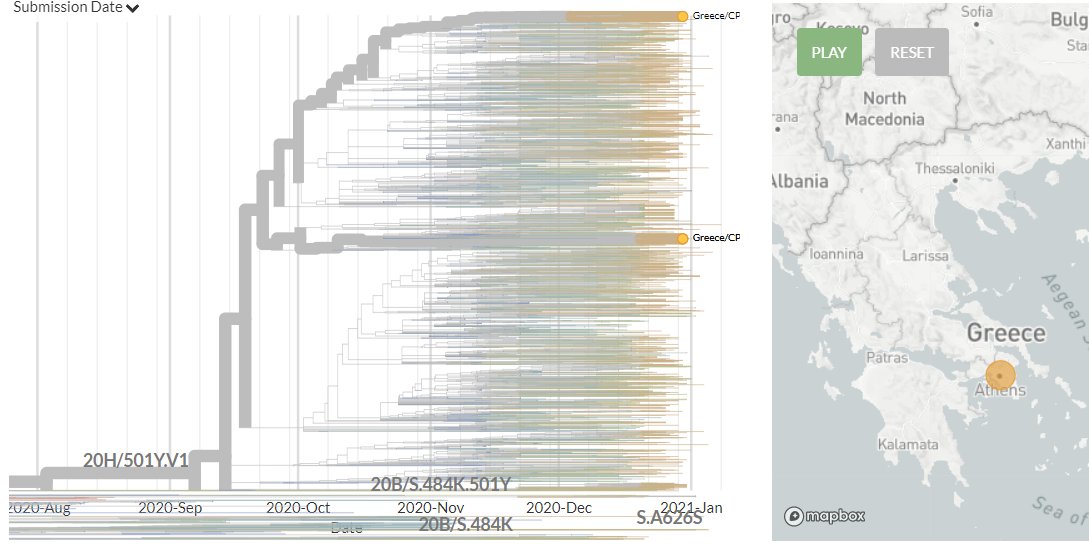
The S:N501 and S:E484 builds are now updated with data from 20 Jan! 🎉
There are almost 400 new non-UK and non-South Africa sequences in 501Y.V1 (B.1.1.7 #b117) & 501Y.V2.
And 8 new sequences in 501Y.V3 & 20B/S.484K (primarily circulating in Brazil)
#SARSCoV2
1/19

There are almost 400 new non-UK and non-South Africa sequences in 501Y.V1 (B.1.1.7 #b117) & 501Y.V2.
And 8 new sequences in 501Y.V3 & 20B/S.484K (primarily circulating in Brazil)
#SARSCoV2
1/19


There are 394 new non-UK sequences in 501Y.V1 from the Netherlands, Denmark, Singapore, Australia, Italy, Spain, France, Ireland, Finland, Sweden, the USA, Switzerland, India, Brazil, Slovakia, & Belgium
2/19
nextstrain.org/groups/neherla…
2/19
nextstrain.org/groups/neherla…

Denmark has 125 new sequences (orange) - many linking to older sequences & clusters, indicating ongoing local transmission (pic 1).
Netherlands has 14 new sequences (yellow) - many linking to older sequences and clusters, likely indicating local transmission (pic 2).
3/19

Netherlands has 14 new sequences (yellow) - many linking to older sequences and clusters, likely indicating local transmission (pic 2).
3/19


Belgium has 75 new sequences showing a broad diversity and indicating many introductions. Some new sequences form clusters that may indicate local transmission.
4/19

4/19


Italy has 46 new sequences (orange), including a large cluster in Abruzzo.
Zooming (divergence view) we can see these sequences mix with older samples, and so may indicate local transmission.
5/19

Zooming (divergence view) we can see these sequences mix with older samples, and so may indicate local transmission.
5/19


Ireland has 31 new sequences (orange), indicating many separate introductions, and some clustering with older sequences.
6/19

6/19


Finland has 26 new samples (yellow). These are mix of separate introductions and links to older sequences, indicating local transmission.
7/19


7/19



India has 13 new sequences (orange & yellow). These are a mix of separate introductions and links to older sequences.
8/19

8/19


France has 12 new seqs (orange & yellow). These are mostly separate introductions, though a few link with older sequences, potentially indicating local transmission (pic 1, 2).
Spain has 9 new seqs, a mixture of new introductions and linking with older sequences (pic 3).
9/19


Spain has 9 new seqs, a mixture of new introductions and linking with older sequences (pic 3).
9/19



Slovakia has 12 new sequences: 1 new separate introduction and a large cluster, which also has sequences from other countries in continental Europe.
10/19

10/19


USA has 11 new sequences (yellow), from Oregon, California, Utah, New Mexico, Oklahoma, Illinois, Michigan, Maryland, & New York. These are a mix of separate introductions & connections to older sequences.
11/19

11/19

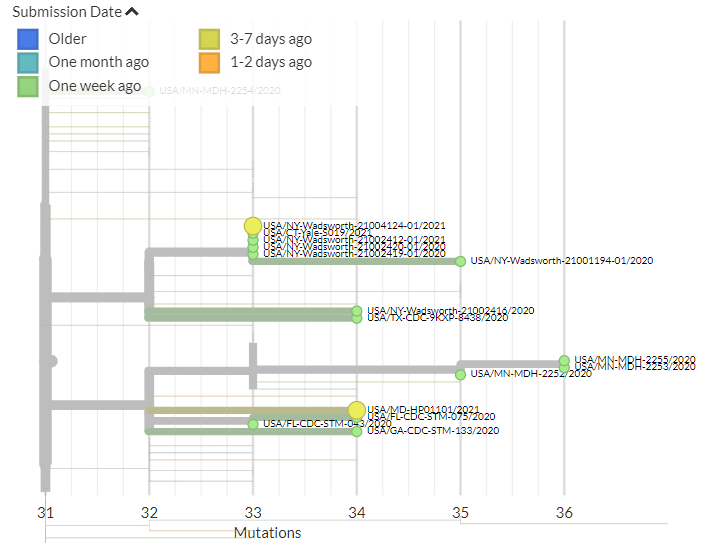
Switzerland has 9 new sequences (orange, some yellow). Though hard to see, most of these do not connect to older sequences. (pic 1)
Singapore has 5 new sequences (yellow and orange) which indicate separate introductions. (pic 2)
12/19

Singapore has 5 new sequences (yellow and orange) which indicate separate introductions. (pic 2)
12/19

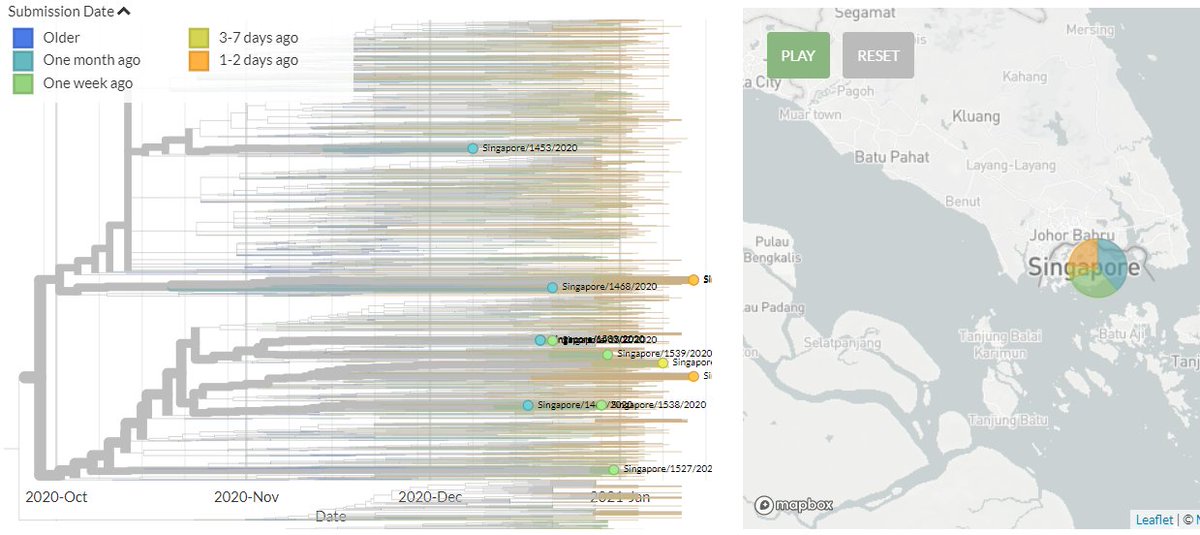
Australia has 3 new sequences, indicating separate introductions. (pic 1)
Sweden has 3 new samples, which represent separate introductions (though two new samples are linked). (pic 2)
Brazil has 1 new sequence, a separate introduction. (pic 3)
13/19


Sweden has 3 new samples, which represent separate introductions (though two new samples are linked). (pic 2)
Brazil has 1 new sequence, a separate introduction. (pic 3)
13/19



There are 4 new non-South African sequences in 501Y.V2 from France, and Australia, as well as almost 100 new sequences from South Africa.
14/19
nextstrain.org/groups/neherla…
14/19
nextstrain.org/groups/neherla…
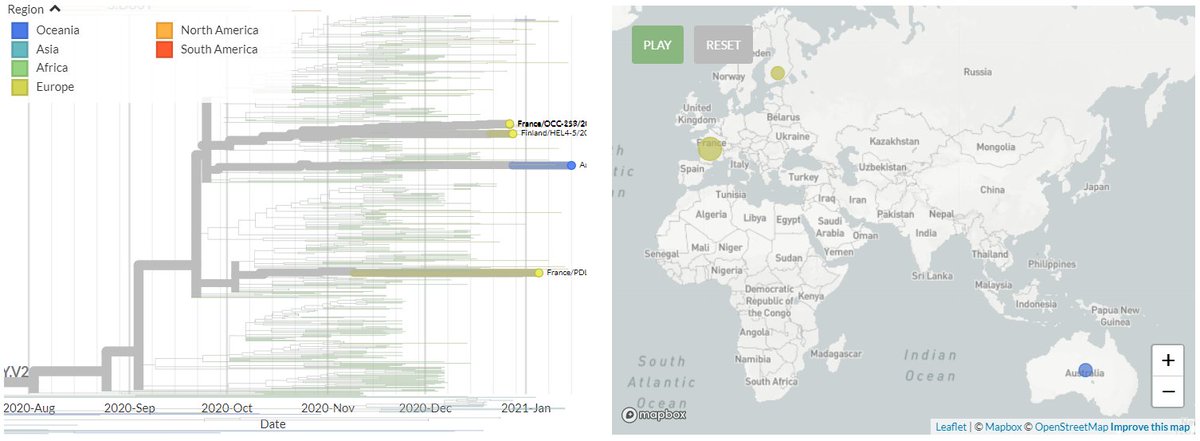
France has 3 new sequences, which represent 1 separate introduction and two new sequences are close to older sequences, but may represent a common source.
15/19

15/19


Australia has 1 new sequence, representing a separate introduction. (pic 1)
Finland has 1 new sequence, a separate introduction. (pic 2)
We can also a see almost 100 new sequences from South Africa that belong to the 501Y.V2 variant. (pic 3)
16/19


Finland has 1 new sequence, a separate introduction. (pic 2)
We can also a see almost 100 new sequences from South Africa that belong to the 501Y.V2 variant. (pic 3)
16/19



There are new sequences in 20B/S.484K from Brazil (2), the USA (Georgia - 1), the UK (3), and Denmark (1).
17/19
nextstrain.org/groups/neherla…
17/19
nextstrain.org/groups/neherla…

As usual, country plots are updated. As always, interpret these with care - countries are often preferentially sequencing S-drop-out and S:N501 samples, which means frequencies shown are often not representative!
19/19
github.com/hodcroftlab/co…
19/19
github.com/hodcroftlab/co…

• • •
Missing some Tweet in this thread? You can try to
force a refresh











